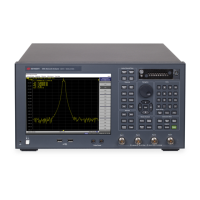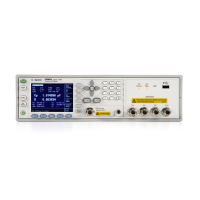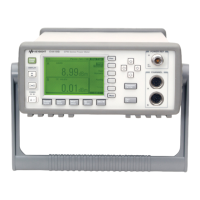Measurement
213
2. Click Power Calibration > Sensor A/B Settings > Zero Type > INT|EXT
to select from internal or external zeroing.
3. Click Power Calibration > Sensor A/B Settings > Zero/Calibrate Sensor
4. For U2000 Series USB power sensors, Sensor B setting is
disabled.
Selecting Target Port of Error Correction
The power level error correction is executed for each channel/test port.
You can set the following items for each channel/test port:
• ON/OFF of error correction
• Setting of loss compensation
• Selection of the power sensor
• Number of power level measurements at one measurement point
• Calibration data
Follow the steps below to select the test port for which you want to
set/execute power level error correction.
1. Press Cal key.
2. Click Power Calibration.
3. Press Channel Next/Channel Prev keys to select the channel.
4. Click Select Port.
5. Click the softkey corresponding to the test port you want to select.
Setting Loss Compensation
If you need to apply a signal with a more accurate power level to the DUT,
you can use the loss compensation feature to obtain calibration data for
correcting the difference in power loss due to the difference in connection
method (cable, adapter, etc.) between the time when the power calibration
data are measured and when the actual DUT is measured.
The loss compensation feature corrects the power measurement result
based on the preset power loss data. More specifically, if you turn on the
loss compensation, the measurement result of the power level obtained in
the power calibration data measurement is a value obtained by adding the
loss value set in the loss compensation table to the measured power value.
Turning ON/OFF loss compensation
Follow the steps below to turn ON/OFF the loss compensation.
1. Press Cal key.
2. Click Power Calibration.
3. Select a port (refer to Selecting target port of error correction).

